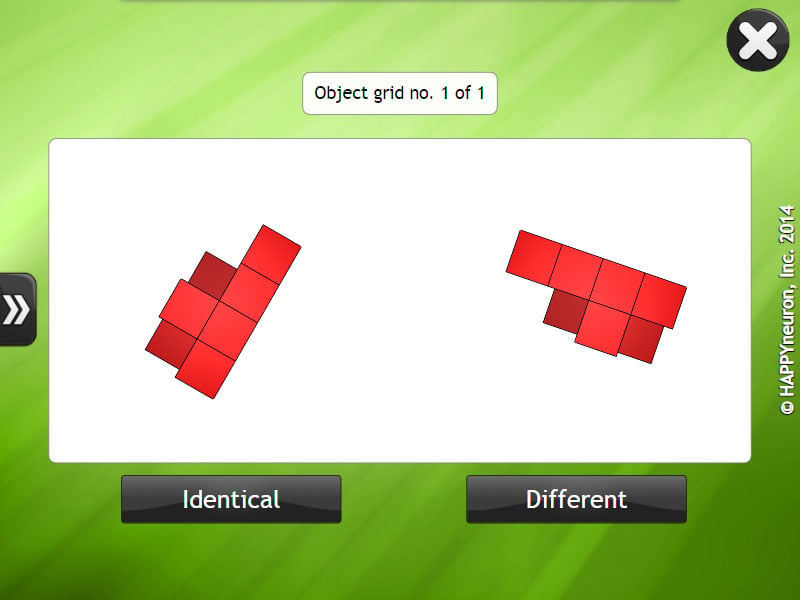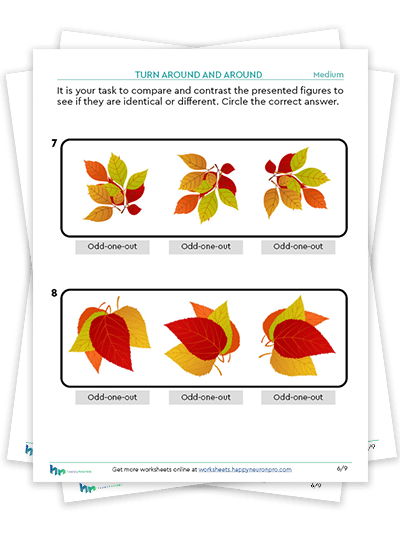
Please note that you can only play the exercise once on this page. See the free trial section below for full access!
In this exercise, the user is presented with a 3D geometrical figure. They must then determine whether similar rotated geometrical figures are the same or different from the shown figure.

Mental rotation takes place in the right cerebral hemisphere, in the areas where perception also occurs. It is associated with the rate of spatial processing and intelligence. The neocortex, the outermost layer of the brain, is responsible for humans’ ability to recognize patterns. The primary part of the brain involved in spatial memory is the hippocampus.
This task aims to train the user’s visual mental imagery skills, specifically their mental rotation abilities. The ability to effectively manipulate objects mentally allows individuals to make decisions as to what an object is, and where to place an object in space so that it does not fall, and helps them create a plan for how to navigate their environment.
You can modify:
Over 2,600 unique exercise configurations and significant data set depth.

Pricing + Offers


© 2023 HappyNeuron is a Product of Humans Matter